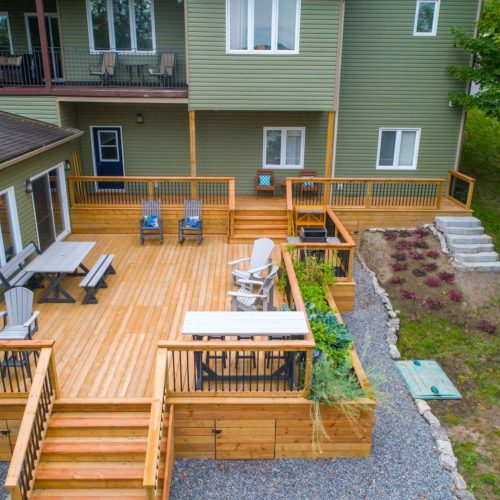AIFP Answers Your FAQs About Pressure-Treated Wood
As one of the largest building products wholesale organizations in the country, AIFP knows a thing or two about lumber. In fact, our seven departments cover several major lumber commodities, including Southern yellow pine, which makes up over 85% of all treated wood in the US. In today’s blog, we answer your frequently asked questions about pressure-treated wood.
What is Pressure-Treated Wood?
Pressure-treated wood is wood that undergoes a process in which high pressure forces a solution of water and chemical preservative agents deep into the cells of the wood. This treatment delays deterioration caused by fungi, rot, and destructive insects, making it particularly useful for outdoor applications like exterior framing, decking, and fencing.
Is Pressure-Treated Wood Toxic?
While pressure-treated wood was treated with arsenic until 2003, arsenic-free pressure-treated wood is considered safe for everything from raised garden beds to children’s playground equipment. That said, it should never be used in marine applications, countertops, or woodworking projects that come into direct contact with food, like bowls or cutting boards. You should also wear gloves, eye protection, and a dust mask when working with pressure-treated wood, taking special care to avoid breathing in the sawdust. You should also avoid burning pressure-treated wood, as it can release toxins into the air that can cause chronic respiratory issues and other health problems.
Do You Need to Seal Pressure-Treated Wood?
Yes. While treated wood is protected against insects, rot, and fungi, it is not protected against moisture, mold, mildew, or UV rays. Sealing your pressure-treated wood annually can help prevent your wood from swelling, cracking, cupping, and warping, as well as preventing discoloration.
How Long to Wait to Stain Pressure-Treated Wood?
You want to wait until the wood is completely dry before staining. Depending on the climate conditions, this can take anywhere from a few days to a few months. Before you stain your pressure-treated wood, it should pass the bead test, which is done by dripping small amounts of water on the wood. If the water beads, the wood needs longer to dry before staining.
What Kind of Screws for Pressure-Treated Wood?
Generally speaking, screws work better than nails with pressure-treated wood, as the ridges grip wood better and are less corrosive. There are several types of screws that work well with pressure-treated wood. Silicon bronze screws, for example, resist wood rot and other forms of corrosion; however, they are quite expensive. Stainless steel screws, especially 304- and 305-grade screws, also work well, as do zinc or ceramic coated steel screws.
Can You Use Pressure Treated Woods Indoors?
While pressure-treated wood can be used safely in indoor applications, doing so is often costly and unnecessary. Even so, pressure-treated wood may be useful in sub-flooring, interior framing, and attic and basement wall framing.
How Long Does Pressure-Treated Wood Last?
While pressure-treated wood protects from rot, insects, and fungi for up to 40 years, water damage often occurs sooner. In fact, there are many factors that can influence how long pressure-treated wood lasts, including the climate, the type of wood, how and where it’s being used, and how well it’s maintained. Pressure-treated poles, for example, might last up to 40 years while decking and flooring tends to last closer to 10 years.
How to Preserve Pressure-Treated Wood?
There are several ways you can preserve pressure treated wood so it lasts as long as possible. Letting the wood dry completely before adding sealer, for example, goes a long way toward the effectiveness of the sealer. Separating pressure-treated wood from soil with concrete, gravel, or plastic encasements can also prevent moisture transfer to extend the life of your pressure-treated wood. Preventative routine maintenance can also help your pressure-treated wood last longer. Annually applying water-repellant sealers, for example, can prevent your wood from swelling, cracking, cupping, and warping, as well as preventing discoloration, mildew, and mold. Looking to buy a large shipment of high-quality Southern yellow pine? Our expert traders take all the hassle out of buying lumber, including organizing prompt transportation. Give them a call at (800) 366-1611 to request a quote. In the meantime, check out our lumber blog where we cover everything from dimensional lumber and wood cuts to cedar siding and plywood.

Jump Start Your Career
Up for the challenge? We'll give you the tools to excel. AIFP is continually growing. We recruit new traders year-round.
